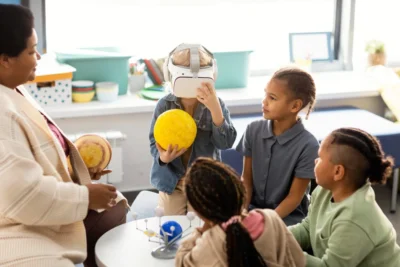Effective assessment is vital for measuring student learning, highlighting areas of strength and identifying areas where improvements are needed. As a high school teacher, you play an important role in the learning and development of your students, and therefore, your assessment methods must be tailored to bring out the best in them.
In this post, we’ll explore some of the best assessment techniques used by high school teachers and delve into tips and tricks to help master them.
Create Assessment Rubrics
Assessment rubrics are frameworks that allow you to communicate your grading criteria to your students clearly and transparently. They describe what you’re looking for in assignments, essays and other tasks, and enable students to see where they might need to make improvements.
A good rubric provides clear descriptions of different levels of achievement, from excellent to poor, and highlights the most critical learning objectives. Creating a rubric is easy; all you need is to identify the key aspects of what you want your students to achieve and then create a rating scale that reflects that.
Use Multiple Assessment Techniques
Different students have varied learning styles, and mastering one technique may not be sufficient to evaluate the performance of all your students effectively. Therefore, as a teacher, you must try incorporating multiple assessment techniques such as tests, quizzes, projects, presentations, essays, portfolios, and group activities, among others. Different techniques offer unique insights into your students’ learning processes and enable you to gather evidence of their skills, knowledge, and aptitudes.
Additionally, using varied assessment tools gives you a more comprehensive view of your student’s overall performance and helps you identify where their strengths or weaknesses lie.
Engage Students in Self-Assessment
It’s essential to engage students in their learning and development and encourage them to take responsibility for their progress. Self-assessment is a great way of involving students in the assessment process, and it enables them to recognise and take ownership of their learning.
As a teacher, you can help your students develop their self-assessment skills by teaching them how to assess their progress, providing them with grading rubrics and setting goals. Self-assessment also enhances student motivation, helps to build self-confidence and promotes a collaborative approach to learning.
Work with Top-Tier Assessment Providers
As you seek to perfect your assessment techniques, it’s essential to work with an experienced assessment provider like qats.com.au. Such providers have in-depth knowledge of effective assessment techniques and tools and will help you to create bespoke assessment solutions aligned with your teaching goals.
They have a team of experienced professionals who understand the demands of high school teaching and can provide insights into new and innovative assessment techniques. They can also offer you unbiased feedback and support as you seek to improve your assessment practices.
Celebrate Learning
Assessment isn’t just about grading, but also about celebrating achievements and learning. As a teacher, you can celebrate student learning in various ways, such as providing constructive feedback, acknowledging progress, recognising areas of strength, and using formative assessment.
Celebrating learning helps to reinforce positive and productive habits in your students, shows that you care about their progress, and inspires them to learn more.
In Summary
Assessment is a crucial aspect of high school education, and teachers must use the right techniques to evaluate student performance and progress. By creating assessment rubrics, using multiple assessment techniques, engaging students in self-assessment, working with top-tier assessment providers, and celebrating learning, teachers can create an optimal learning environment that fosters growth and development.
By implementing these tips, we’re confident that you will be able to enhance your assessment techniques and drive better outcomes for your learners.










